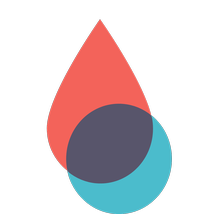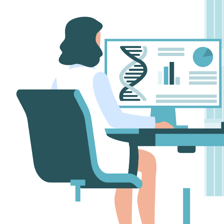Osteoarticular and muscular disorders samples and R&D services
What are osteoarticular and muscular diseases?
Osteoarticular diseases are conditions that affect bones and joints, and can range from simple, non-inflammatory conditions like osteoporosis to more complex, inflammatory conditions like rheumatoid arthritis.
Muscular diseases, on the other hand, refer to a group of disorders that affect the muscles of the body. These conditions can cause a variety of symptoms, including weakness, muscle wasting, and difficulty with movement. Some examples of muscular diseases include muscular dystrophy, myositis, and myopathy.
Both osteoarticular and muscular diseases can significantly impact a person's quality of life, making it difficult to perform everyday activities and potentially leading to disability. However, with proper management and treatment, many people with these conditions are able to live fulfilling lives.
What types of samples and data are used in osteoarticular and muscular disorder research?
In research on osteoarticular disorders, various types of samples can be used to study the underlying mechanisms, diagnosis, and treatment of these conditions. Some of the most commonly used samples in osteoarticular disorder research include:
Tissue samples
Samples of bone, cartilage, and synovial fluid (found in joints) can be collected and analyzed to study the molecular and cellular changes that occur in osteoarticular disorders.
Blood samples
Blood samples can be used to measure markers of inflammation and disease activity, as well as to assess the presence of antibodies associated with certain types of osteoarticular disorders.
Imaging samples
Radiographs, computed tomography (CT) scans, and magnetic resonance imaging (MRI) can provide images of the bones and joints, allowing researchers to study the structural changes that occur in osteoarticular disorders.
Patient-reported outcomes
Surveys and questionnaires can be used to gather information on patient-reported symptoms, such as pain, stiffness, and difficulty with movement, and to assess the impact of osteoarticular disorders on quality of life.
Overall, the type of sample used in osteoarticular disorder research depends on the specific research question being studied and the type of analysis being performed.

Available types of osteoarticular and muscular diseases biological samples
- Tissues
- Fresh tissues
- Frozen tissues (OCT and FF)
- FFPE tissues
- Healthy tissues
- Blood derivatives
- Whole blood
- PBMC
- Plasma
- Serum
- Leukapheresis
- Biofluids
- Urine
- Stool/Feces
- Saliva
- Imaging data
Types of Collections
- Retrospective: we can look into existing biobank collections
- Prospective: we can set up clinical collection specific to a given project
Experimental models used in muscular and osteoarticular disorder R&D
There are several experimental models used in the research and development of muscular and osteoarticular disorders treatments:
Cell culture models: These models involve the in vitro study of cells isolated from affected tissues, such as muscle or cartilage cells, to understand cellular and molecular mechanisms underlying disease development.
Animal models: Commonly used animal models include mice, rats, rabbits, and dogs, which are used to study the anatomy, physiology, and pathology of musculoskeletal disorders.
Organoid models: 3D tissue culture models that mimic the structure and function of a specific organ or tissue type.
In vitro biomechanical models: These models simulate the mechanical environment of joints, bones, and muscles to study the effects of various loads and strains on these tissues.
In vivo imaging and biomechanical testing: Non-invasive imaging techniques, such as X-ray, MRI, and CT scans, are used to study the structure and function of musculoskeletal tissues in living organisms.
These models provide valuable information and help to advance our understanding of muscular disorders, as well as to develop and test new treatments.

Typical deliverables
- Feasibility of availability of samples or experimental services
- Regulatory aspects (transfer authorizations, export authorizations, ethics committee agreement)
- Contracting
- Samples shipment in appropriate conditions
- Clinical data or results
- Other services (i.e. Nucleic acid extraction, quality control)

Get started with your muscular and osteoarticular diseases research request
Please answer the fields below to be contacted by our team of scientists
Our team will handle your osteoarticular and muscular disorders R&D procurement from the beginning to the end
Perform a feasibility study by looking for existing samples already in collections & ready to be transferred
Set up a clinical biological collection and preparing contracts with sources
Assist the material transfer from the source to the lab, including treatments, QA or shipping, as needed